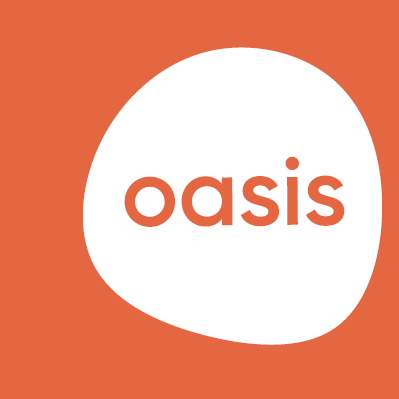Why work place wellbeing requires a deeper dive
As a wellbeing practitioner, part of my work involves offering sessions to groups and teams of busy, burnt-out people, with an aim of creating space to rest, reflect and acquire helpful resources. It seems reasonable to suggest that this work is much needed at a time when so many of us are beginning to emerge from a year of change, continuous adaptation and collective trauma. And yet, sharing coping strategies, offering lunch break yoga sessions and encouraging positive affirmations won’t solve complex wellbeing problems, though they can be a helpful part of a bigger picture.
There are many powerful tools at our disposal in terms of offering support and valuing employees as whole people, and there are also powerful forces that may be negatively impacting upon their wellbeing. Without considering both together, we are in danger of offering a sticking plaster for what might be a deep wound. A deeper dive into this topic may sound daunting, or beyond the capacity and responsibility of a leader or employer to consider. Below, I set out why it’s worth exploring a more holistic look at wellbeing.
Hierarchy of needs – wellbeing from the bottom up
Maslow’s Hierarchy of Needs sets out our basic human needs for survival and safety as the baseline upon which more complex needs are built. I suspect we all know from experience how hard it is to be our ‘best selves’ when we are facing a lack of rest, disruption to our safety and security or changes to our environment. How might considering this be useful to leaders? Essentially, it offers an opportunity to consider how policies, practices and structures within an organisation might potentially help or hinder the meeting of people’s needs. An exploration of this might lead to things like celebrating different identities, policies that encourage work-life balance, modelling healthy boundaries or honestly assessing the quality of life afforded by rates of pay at all levels.
The challenge here is that, while we can generalise and categorise human needs, one size does not fit all. How our needs are best met varies enormously from person to person – so how might leaders with responsibility for a diverse group of people and their competing needs begin to respond? As a coach, I believe that generally, individuals have within them the best ideas about what they need in order to lead healthier, happier lives where they carry out fulfilling work to the best of their ability. Sometimes, they might benefit from support to draw out these ideas, but they are the experts in their own needs. I’d suggest creating meaningful opportunities to listen and share ideas. While this requires time and resources, there’s a good chance of this paying dividends if it improves upon staff wellbeing.
Offering opportunities for staff to be heard, to share ideas and to find solutions to complex problems does not necessarily commit an employer to taking responsibility for implementing everything that’s suggested – negotiations may need to be made and responsibility shared. Some barriers may be too significant to overcome. But when carried out with care and positive intent, listening to employees’ concerns, needs and ideas can be a powerful and collaborative experience that supports them to feel seen, heard and valued, and to know that they are not powerless. This in itself, can have a positive impact on wellbeing.
“I’ll take the time off, thanks”
Recently, I heard an account of an employer offering a wellbeing session to a large team who had been putting in significant overtime doing high-risk work throughout the pandemic. On the face of it, this was a well-intentioned intervention from an employer who genuinely wanted to support their staff. However, the session quickly descended into chaos. Feedback from team members about why they were dissatisfied included mandatory attendance, a lack of psychological safety and a lack of acknowledgement of the ways that the work environment may be affecting staff wellbeing. The first of several participants left after half an hour, stating that the best decision they could make for their wellbeing that day would be to take the time off instead. Perhaps not an encouraging story, but one full of rich opportunities for learning, listening and working towards change.
In this case, team members were expressing a clear need to be listened to about some of the structural issues that were causing them stress and ill-health. But could inviting conversations about things we may feel powerless to change be a case of opening Pandora’s Box and not being able to close it again? It’s quite possible that the process of lifting the lid on potentially difficult issues under the surface will be a messy one. Not discussing things because of what may be uncovered is an option – a strategy for avoiding risk and change. But I’d argue that this avoidance carries its own set of risks – for example, outcomes like the one I heard about in the story above.
Whole Person working, wellbeing and equity in the workplace
A whole-person approach in the workplace means that we look beyond our titles, job function or ‘usefulness’ and professional veneer, and connect as fellow humans full of creativity and potential. Humans who sometimes have a crap day and don’t perform at our best, but are well equipped with tools to help us bounce back again. This isn’t about being so focused on authenticity and having our individual needs met that we never get any work done. There’s a balance of individual and collective needs and responsibilities at play in any workplace. And though it may seem paradoxical, reaping the wellbeing benefits of being allowed to bring our real selves to work sometimes involves a willingness to have difficult conversations, to mess up and to put things right again. Creating an environment where people feel safe enough to say what they really think and feel is a brave choice – we may not always like what we’re hearing but we’ll have created opportunities for greater empathy, creative solutions through the meeting of diverse ideas and a sense of appreciation.
For me, there’s also a clear link between a Whole Person, wellbeing focused approach and looking at the workplace through an Equality, Diversity and Inclusion lens. In fact, I find it difficult to truly separate these concepts. What additional barriers within both the workplace and society might be impacting upon a person’s wellbeing and ability to do their job well? What creative ideas might exist within people who have been navigating and vaulting these barriers throughout their lives? And what kind of impact might we be able to have in the workplace if we valued the whole person and committed to working to remove any of these barriers within our control? These are some of the important, yet challenging questions that constitute that deeper dive I’m advocating for. And of course, before we take that dive, we must ensure our own oxygen supply is topped up – so a very first step is to look after our own wellbeing and lead by example as far as possible. And a next step might be to commit to protecting some time and headspace to pondering some of the big questions about wellbeing.
Mo Ford
Learn more about the Oasis Raw Network. Contact us for more information on how we can help embed employee wellbeing through our oasis counselling services.


